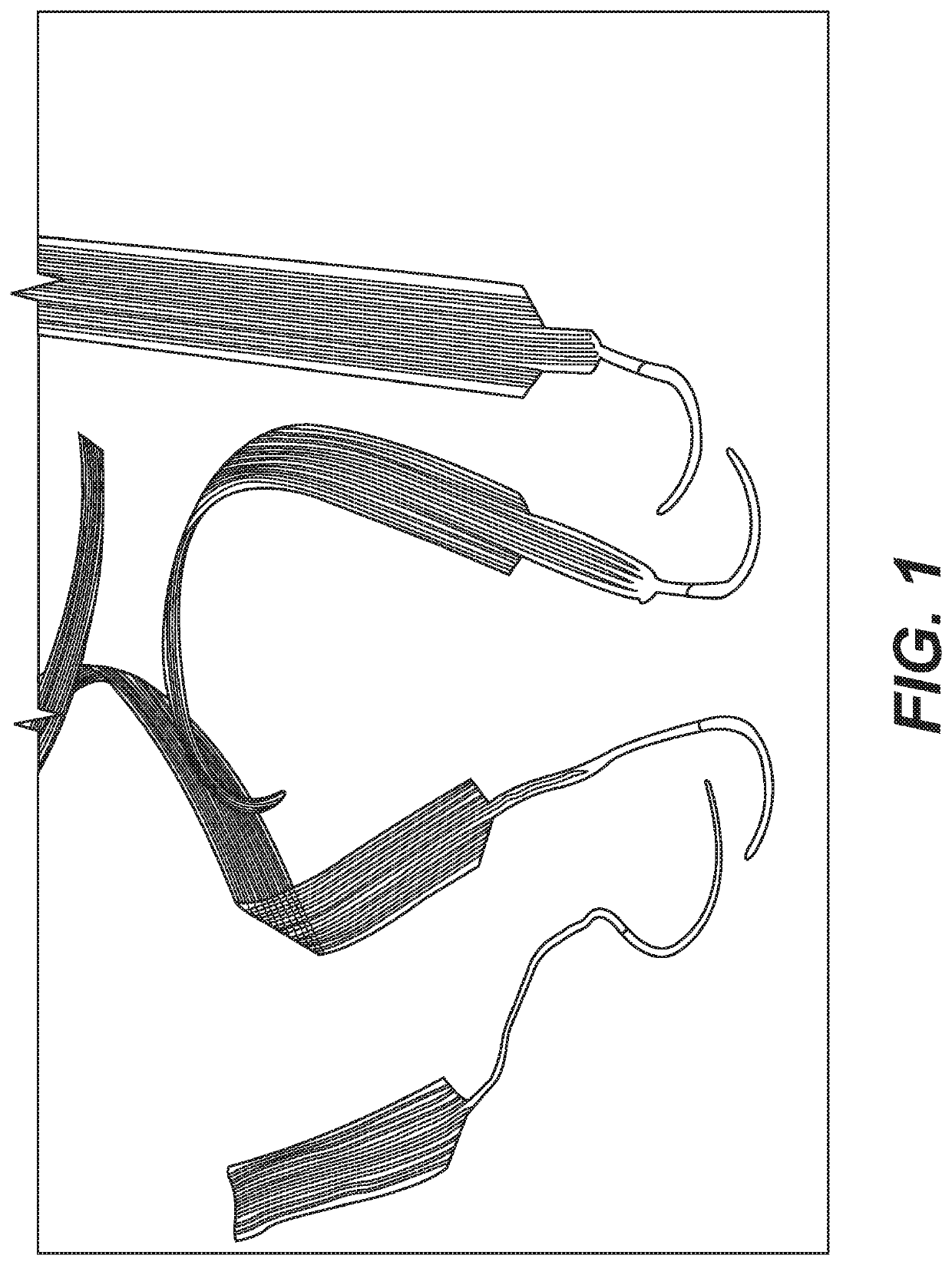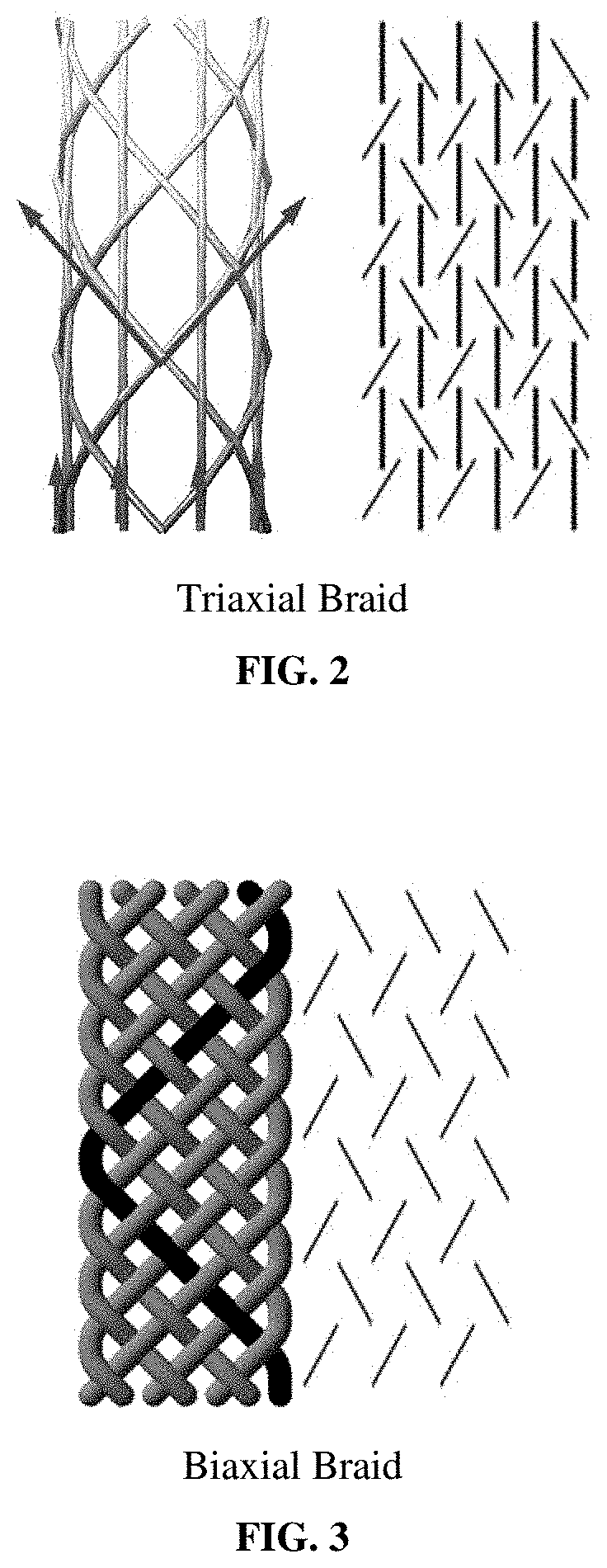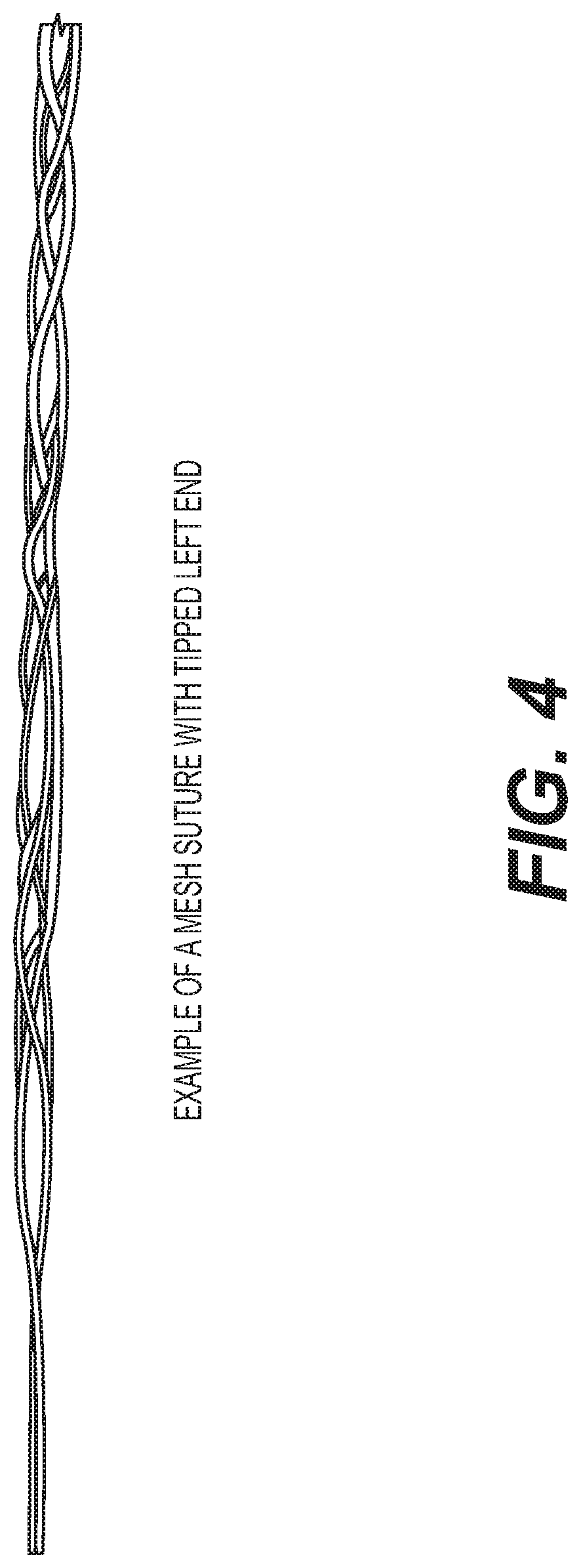Methods of manufacturing mesh sutures from poly-4-hydroxybutyrate and copolymers thereof
a polyhydroxybutyrate and polymer technology, applied in the direction of braid, melt spinning method, ornamental textile articles, etc., can solve the problems of loss of strength retention and limit the application of fast healing repairs, etc., to achieve excellent drape, high burst strength, and high tensile strength
- Summary
- Abstract
- Description
- Claims
- Application Information
AI Technical Summary
Benefits of technology
Problems solved by technology
Method used
Image
Examples
example 1
Production of 60-Filament P4HB Yarns
[0215]Bulk P4HB resin in pellet form with molecular weight of 200-500 kDa was dried to less than 300 ppm water using a rotary vane vacuum pump system. The dried resin was transferred to an extruder feed hopper with nitrogen purge to keep the pellets dry. The extruder used had a ¾″ diameter barrel and an extrusion screw with a 30:1 L / D ratio. The extrusion barrel contained 4 heating zones, a metering pump and a spin pack assembly. The pellets were gravity fed into a chilled feeder section and introduced into the extruder's heated barrel (see Table 7). The heated and homogenized melted resin from the extruder was fed into a heated metering pump (melt pump), and from the melt pump the extruded resin was fed into the heated block and the spinneret assembly. The spinneret had 60 holes with a capillary diameter of 0.200 millimeters and a L / D ratio of 2:1. (The spinneret may also be configured in other alternative manners. For example, the spinneret can ...
example 2
Extrusion of P4HB Yarn Using a Split Stream
[0217]Molten yarn was extruded as described in Example 1, except that the spinneret holes were divided into two groups of 30 holes each with clear separation between the two groups to form dual spinning streams. For example, P4HB yarn extruded from a 60-hole spinneret was split into two 30-filament streams. Each spinning stream was guided to a separate spin finish applicator, and wound separately on a spool. The P4HB yarn was oriented using the conditions shown in Table 8, and had the properties shown in Table 9.
example 3
Extrusion of P4HB Yarn Using a Quad-Split Stream
[0218]Molten yarn is extruded as described in Example 1, except that the spinneret holes were divided into four groups with clear separation between the four groups to form quad spinning streams. For example, P4HB yarn extruded from a 60-hole spinneret may be split into four 15-filament streams. Each spinning stream is guided to a separate spin finish applicator, and wound separately on a spool.
PUM
| Property | Measurement | Unit |
|---|---|---|
| elongation to break | aaaaa | aaaaa |
| Young's modulus | aaaaa | aaaaa |
| tensile strength | aaaaa | aaaaa |
Abstract
Description
Claims
Application Information
 Login to View More
Login to View More - R&D
- Intellectual Property
- Life Sciences
- Materials
- Tech Scout
- Unparalleled Data Quality
- Higher Quality Content
- 60% Fewer Hallucinations
Browse by: Latest US Patents, China's latest patents, Technical Efficacy Thesaurus, Application Domain, Technology Topic, Popular Technical Reports.
© 2025 PatSnap. All rights reserved.Legal|Privacy policy|Modern Slavery Act Transparency Statement|Sitemap|About US| Contact US: help@patsnap.com



